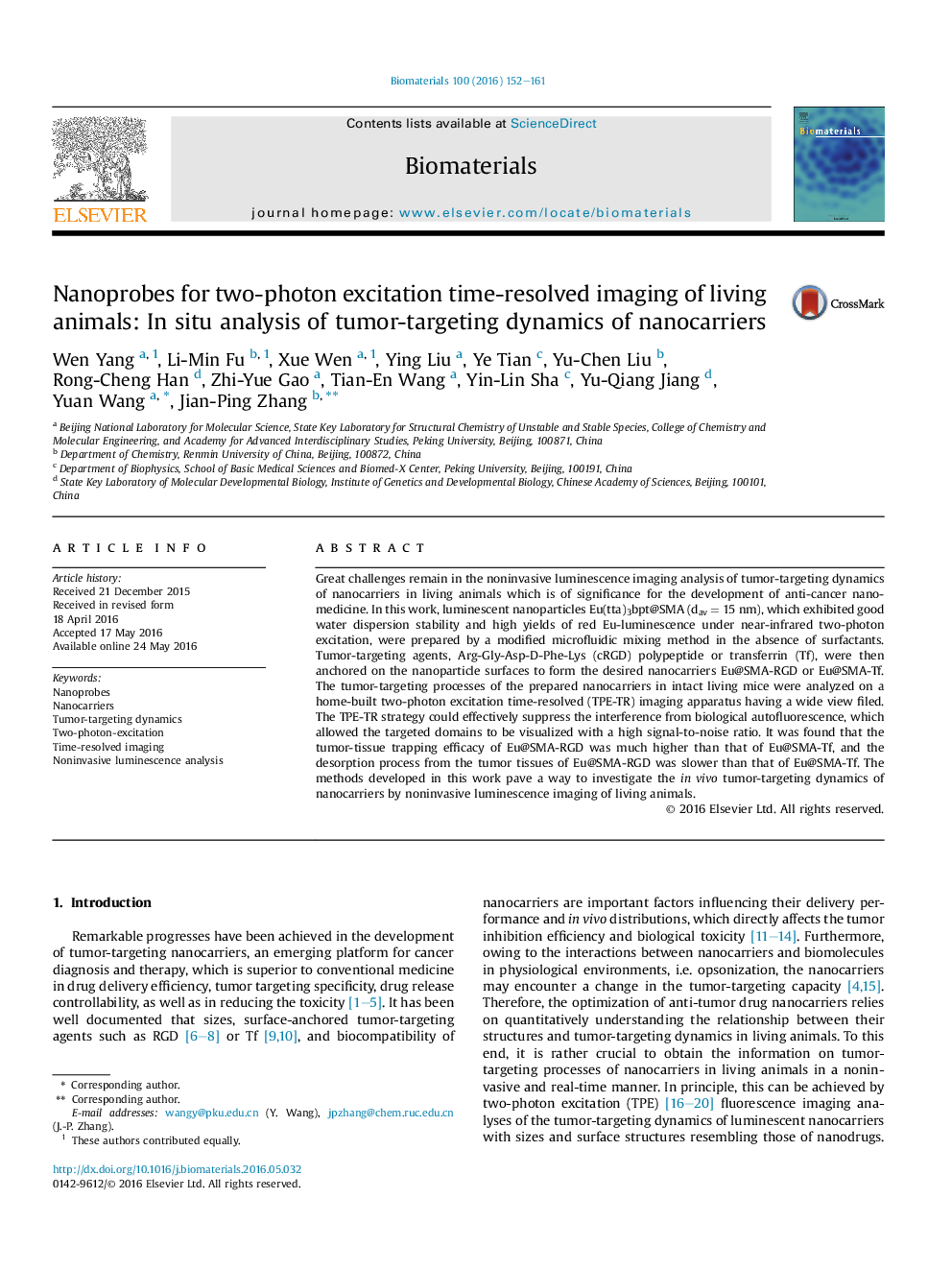| Article ID | Journal | Published Year | Pages | File Type |
|---|---|---|---|---|
| 6482091 | Biomaterials | 2016 | 10 Pages |
Abstract
Great challenges remain in the noninvasive luminescence imaging analysis of tumor-targeting dynamics of nanocarriers in living animals which is of significance for the development of anti-cancer nanomedicine. In this work, luminescent nanoparticles Eu(tta)3bpt@SMA (dav = 15 nm), which exhibited good water dispersion stability and high yields of red Eu-luminescence under near-infrared two-photon excitation, were prepared by a modified microfluidic mixing method in the absence of surfactants. Tumor-targeting agents, Arg-Gly-Asp-D-Phe-Lys (cRGD) polypeptide or transferrin (Tf), were then anchored on the nanoparticle surfaces to form the desired nanocarriers Eu@SMA-RGD or Eu@SMA-Tf. The tumor-targeting processes of the prepared nanocarriers in intact living mice were analyzed on a home-built two-photon excitation time-resolved (TPE-TR) imaging apparatus having a wide view filed. The TPE-TR strategy could effectively suppress the interference from biological autofluorescence, which allowed the targeted domains to be visualized with a high signal-to-noise ratio. It was found that the tumor-tissue trapping efficacy of Eu@SMA-RGD was much higher than that of Eu@SMA-Tf, and the desorption process from the tumor tissues of Eu@SMA-RGD was slower than that of Eu@SMA-Tf. The methods developed in this work pave a way to investigate the in vivo tumor-targeting dynamics of nanocarriers by noninvasive luminescence imaging of living animals.
Related Topics
Physical Sciences and Engineering
Chemical Engineering
Bioengineering
Authors
Wen Yang, Li-Min Fu, Xue Wen, Ying Liu, Ye Tian, Yu-Chen Liu, Rong-Cheng Han, Zhi-Yue Gao, Tian-En Wang, Yin-Lin Sha, Yu-Qiang Jiang, Yuan Wang, Jian-Ping Zhang,
